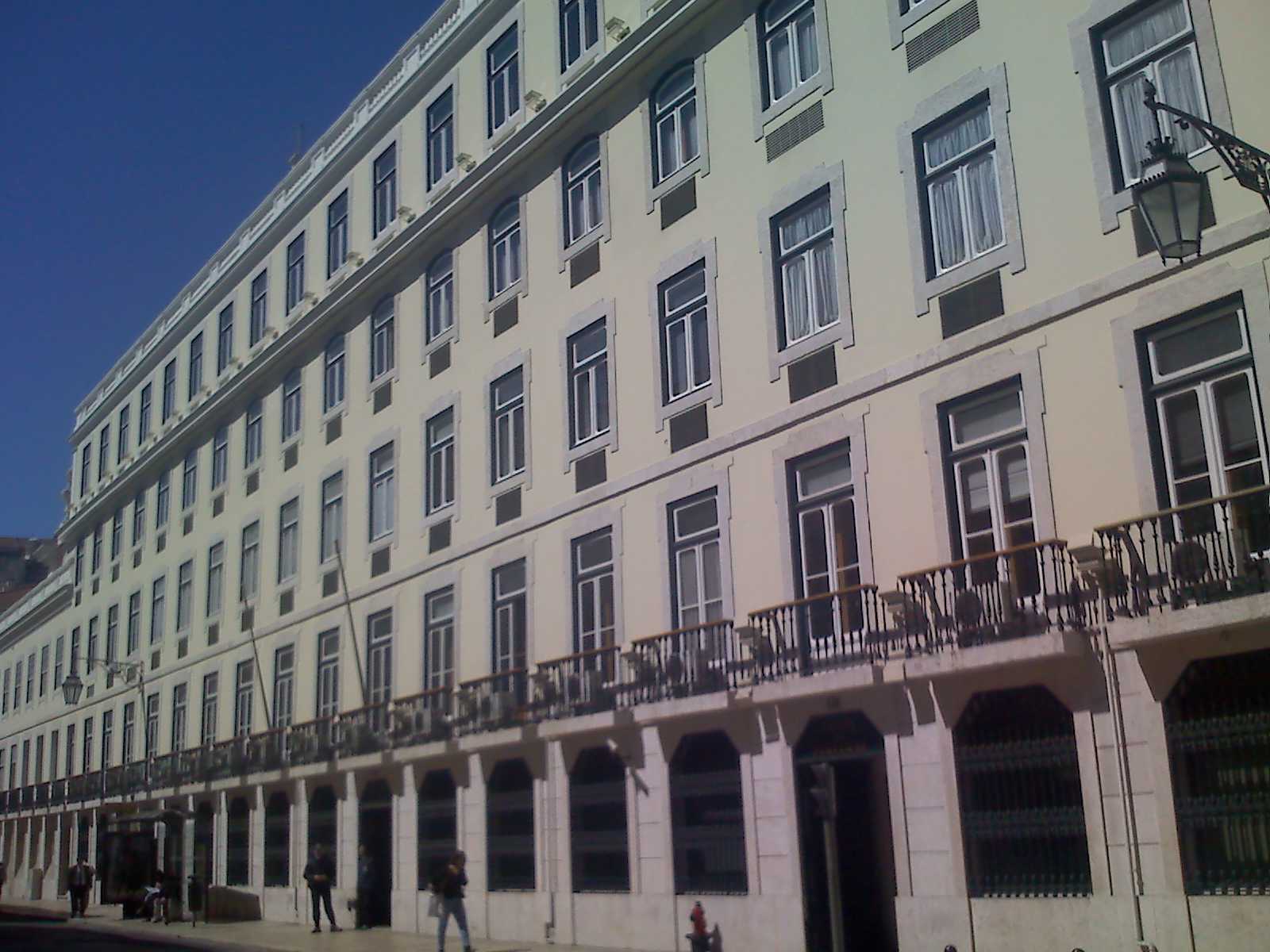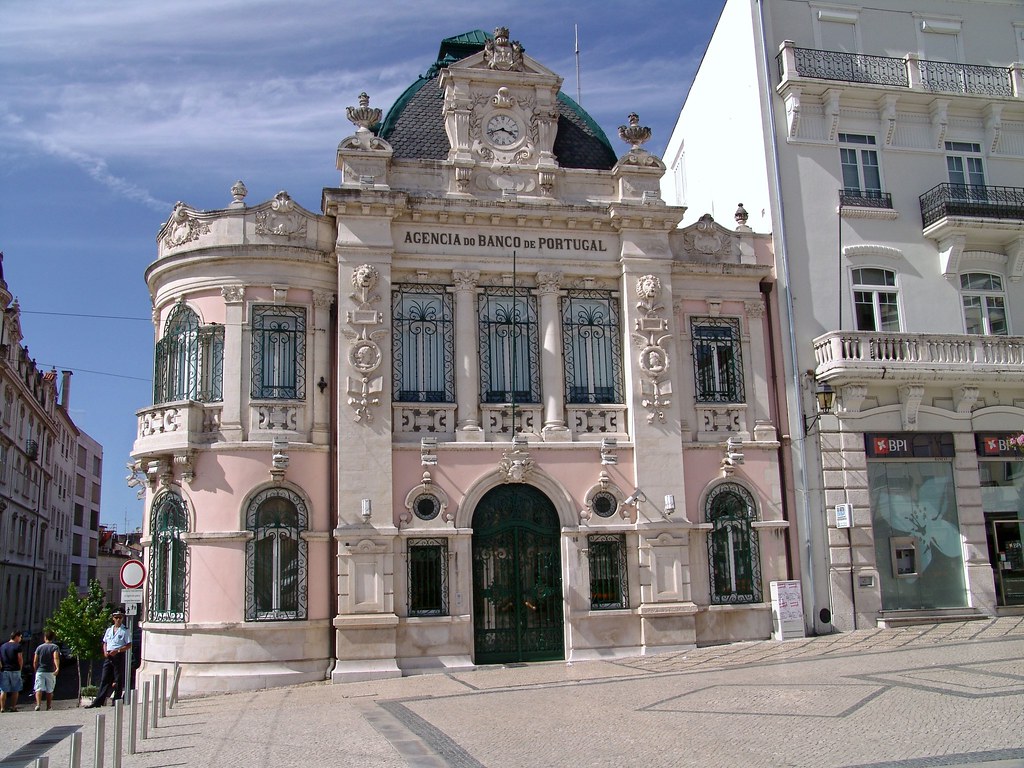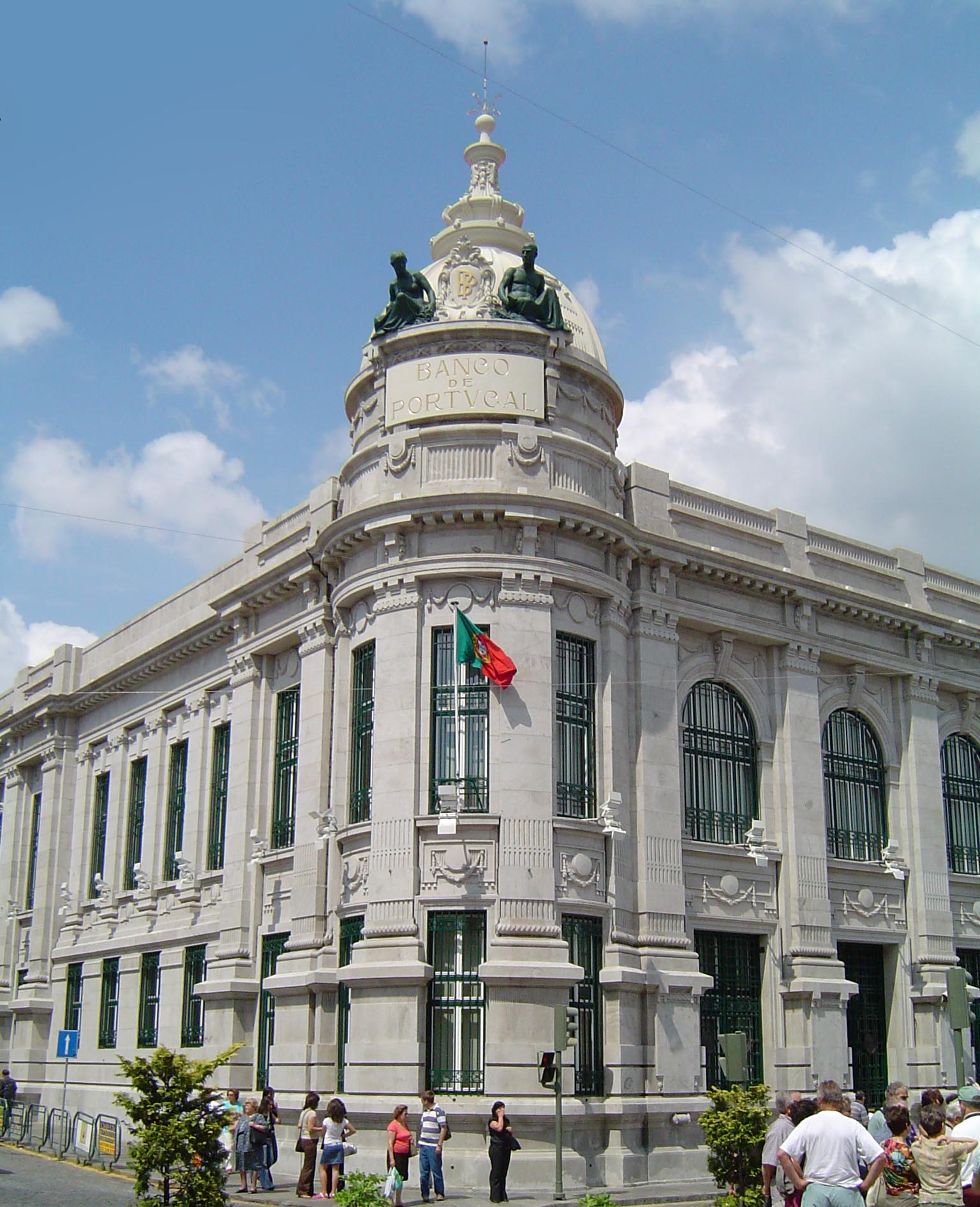Banco de Portugal
Euro
European Central Bank
The Banco de Portugal is the central bank of Portugal, based in Lisbon. It was founded by royal decree of 19 November 1846. As a central bank, she was responsible for the issue of banknotes of Portuguese Reals and later the Portuguese escudos. Today it is part of the European System of Central Banks.
History
1822, the Bank of Lisbon was founded as a central bank. An extensive bank note issue to finance the state budget undermined the confidence of the investors. 1846 was the bank shortly before the collapse. In order to save the Bank of Lisbon was merged with the ( also bad ) Companhia Nacional Confiança. The result, created Banco de Portugal received a banknote monopoly of Portugal. The banknotes issued were declared legal tender. This measure was successful and the bank could spend a large part of the banknotes of the predecessor institutions.
In the 1850s, the financial needs of the state again rose sharply. To cover the government limited the score privilege of Lisbon and issued a number of other banks the right to issue bank notes. The resulting central banks were in Lisbon Banco Minho, Banco de Braga and the Banco ultramarine. In Porto, the central banks Banco Mercantile, Banco Union, Banco and Banco Public Utility Alliance were founded.
Despite these competitors, the Banco de Portugal prevailed in the market. In 1887, the Banco de Portugal was again given the exclusive right to bill emissions. The banknotes of other central banks were drafted within the next 15 years. Exception was the Banco Nacional Ultra Marion, the bills for the Portuguese colonies spent.
1890/91 became the bank during a financial crisis in trouble. In order to save the bank, the government submitted a statutory compulsory course for the outstanding notes. This forced currency was also true after the introduction of escudos for the new currency.
In 1924, the Banco de Portugal victims of the largest case of banknote forgery of history. Alves dos Reis brought counterfeit money in circulation in a volume that was just as large as the official notes. As a result, Bank and Escudo came under massive pressure.
The bank was up to its nationalization in September 1974, a private central bank, whose shares were listed on the stock exchange. Since 1975, the Banco de Portugal is also responsible for banking supervision.
Personalities
- Inocêncio Camacho Rodrigues, President of the Bank from 1911 to 1936






